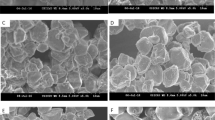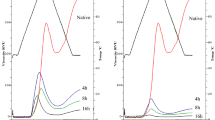Abstract
Resistant starch (RS) formed during parboiling, expanding, popping, flaking, roller drying, extrusion cooking, malting and autoclaving of rice and ragi was determined. The processing conditions were chosen to represent the limits that are being used commercially. RS formation was more pronounced in autoclaving and a drastic increase (∼fivefold) in its content was observed during repeated autoclaving (heating and cooling) was observed. Though processed ragi samples contained more nitrogen, protein and dietary fibre, the RS content was very low compared to rice. Hot paste viscosity studies showed the extruded and malted samples to have low peak and set-back viscosities. Determination of the percentage of starch gelatinization revealed that powdered samples showed 100% gelatinization at higher temperatures whereas malted and extruded samples showed the same at low temperatures.
Similar content being viewed by others
Author information
Authors and Affiliations
Additional information
Received: 7 September 1998
Rights and permissions
About this article
Cite this article
Mangala, S., Malleshi, N., Tharanathan, R. et al. Resistant starch from differently processed rice and ragi (finger millet). Eur Food Res Technol 209, 32–37 (1999). https://doi.org/10.1007/s002170050452
Issue Date:
DOI: https://doi.org/10.1007/s002170050452




